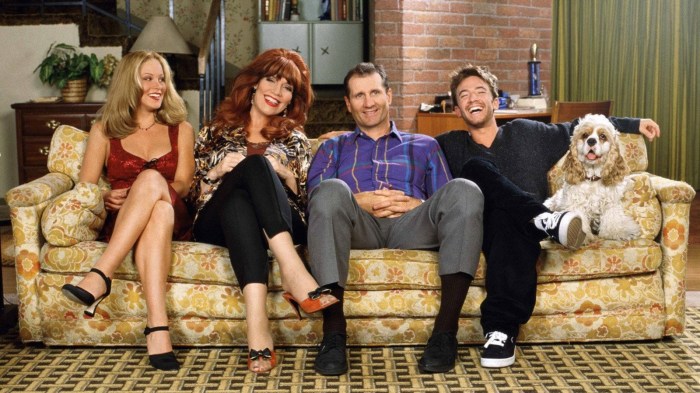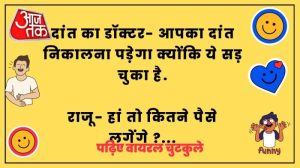
Ever wondered how your favorite sitcom became a global phenomenon? From the slapstick shenanigans of early television to the sharp satire of today’s streaming hits, the world of comedy TV shows is a constantly evolving landscape. We’ll delve into the hilarious history of these shows, exploring their evolution across decades, the diverse comedic styles they employ, and the impact of streaming services on their creation and consumption.
Get ready for a laugh riot as we uncover the secrets behind the scenes and the enduring appeal of comedy on the small screen!
This journey will cover everything from the iconic sitcoms that defined generations to the groundbreaking sketch comedy that pushes boundaries. We’ll examine how comedy reflects and shapes our society, exploring its use as social commentary and its power to provide much-needed escapism. Prepare for a rollercoaster ride through the best (and sometimes, the weirdest) of comedic television!
Popularity of Comedy TV Shows

The enduring appeal of comedy TV shows lies in their ability to provide escapism, social commentary, and relatable humor, all wrapped up in easily digestible formats. From the early days of radio adaptations to the sophisticated streaming series of today, the genre has constantly evolved, reflecting societal shifts and technological advancements.
Evolution of Comedy TV Shows Across Decades
The 1950s saw the rise of the sitcom, epitomized by shows like “I Love Lucy,” characterized by their simple, family-friendly plots and reliance on slapstick humor. The 1960s and 70s brought more socially conscious comedies like “All in the Family” and “The Mary Tyler Moore Show,” tackling issues of race, gender, and class. The 1980s and 90s witnessed the explosion of sketch comedy with shows like “Saturday Night Live” and “In Living Color,” reflecting a more cynical and satirical approach to humor.
The 2000s and beyond saw the rise of mockumentaries like “The Office” and “Parks and Recreation,” blurring the lines between reality and fiction, while sophisticated sitcoms like “30 Rock” pushed the boundaries of comedic writing. The streaming era has allowed for even more diverse and experimental comedic approaches, with shows exploring niche topics and pushing creative boundaries.
Factors Contributing to the Popularity of Comedy Genres
Sitcoms thrive on their relatable characters and situations, offering a comforting familiarity to viewers. Their episodic structure makes them easily accessible and binge-worthy. Sketch comedy’s appeal stems from its unpredictable nature and its ability to satirize current events and cultural trends. The brevity of sketches allows for a wide range of topics and styles, keeping audiences engaged. Animated comedies, such as “The Simpsons” and “Family Guy,” utilize animation to explore more adult themes and darker humor in a visually engaging way.
Animation also allows for greater creative freedom in terms of character design and storytelling.
Audience Demographics for Various Comedy TV Shows
Generally, sitcoms tend to appeal to a broad demographic, attracting families and older audiences with their clean humor and relatable storylines. Sketch comedy often draws a younger, more sophisticated audience that appreciates satire and topical humor. Animated comedies can attract a wide range, from teenagers to adults, depending on the show’s specific content and tone. However, these are broad generalizations, and specific shows within each genre may attract more niche audiences based on their themes and target demographics.
Comparison of Popular Comedy Shows
| Show | Unique Elements | Target Audience | Notable Success Factors |
|---|---|---|---|
| The Simpsons | Satirical, long-running animated sitcom with recurring characters and storylines; known for its social and political commentary. | Broad demographic, appealing to both adults and children (though content is more geared toward adults). | Enduring characters, consistent quality writing, sharp social commentary, and adaptation to changing times. |
| Friends | Ensemble sitcom focusing on the lives and relationships of six friends in New York City; known for its relatable characters and feel-good humor. | Broad demographic, particularly appealing to young adults and those who appreciate lighthearted, relatable comedy. | Relatable characters, strong ensemble cast, and consistent quality writing. The show’s themes of friendship and love resonate with audiences. |
| The Office (US) | Mockumentary sitcom depicting the daily lives of office workers; known for its cringe humor, awkward characters, and realistic portrayal of workplace dynamics. | Younger adults and those who appreciate darker, more realistic humor and satire. | Innovative mockumentary format, relatable characters (despite their flaws), and a strong ensemble cast with excellent comedic timing. |
Comedy Styles and Subgenres
The world of comedy is vast and varied, encompassing a multitude of styles and subgenres, each with its own unique approach to humor. Understanding these differences is key to appreciating the diverse landscape of comedic television. Different styles employ different techniques to elicit laughter, from physical gags to sharp social commentary. This exploration will delve into several prominent styles, highlighting their characteristics and showcasing successful examples from the small screen.
Comedy styles are often interwoven, creating hybrid forms that blend different approaches. For instance, a sitcom might use observational humor as its foundation, while incorporating elements of slapstick and satire to enhance the comedic effect. The effective use of these styles often hinges on the writing, the performances, and the overall tone of the show.
Slapstick Comedy
Slapstick relies on physical humor, exaggerated movements, and often clumsy or violent actions to generate laughter. Think pie-in-the-face routines, pratfalls, and characters engaging in comical chases. This style is often visually driven and appeals to a broad audience due to its universal nature. Successful examples include The Three Stooges (a classic example of the genre’s physicality and absurdity), and more modern iterations like Mr. Bean, which masterfully utilizes physical comedy with minimal dialogue.
The humor derives from the characters’ reactions and the exaggerated nature of their situations.
Observational Comedy
Observational comedy focuses on the humor found in everyday life and human behavior. Comedians using this style often present witty observations about common experiences, societal quirks, or relatable situations. The humor is often derived from the truth and relatability of the observations, making it both insightful and funny. Shows like Curb Your Enthusiasm, with Larry David’s cynical yet insightful commentary on social interactions, perfectly exemplify this style.
Similarly, Seinfeld, famously known as a “show about nothing,” masterfully mines humor from the mundane details of everyday life.
Satirical Comedy
Satirical comedy uses humor to critique and expose societal flaws, political issues, or human folly. It often employs irony, sarcasm, and exaggeration to highlight the absurdity of the target. Shows like The Daily Show with Trevor Noah and Last Week Tonight with John Oliver utilize satire to dissect current events and political figures, prompting viewers to think critically about the issues presented. South Park, while animated, masterfully employs satire to comment on social and political issues, often pushing boundaries and provoking strong reactions.
Absurdist Comedy
Absurdist comedy embraces the illogical and nonsensical. It rejects conventional narrative structures and logic, often presenting surreal situations and characters that defy explanation. The humor arises from the unexpected and the inherent absurdity of the scenarios. Shows like Monty Python’s Flying Circus are prime examples of this style, known for their surreal sketches and nonsensical humor. More contemporary examples might include certain aspects of Rick and Morty, with its unpredictable plots and outlandish characters.
The humor stems from the sheer unexpectedness and illogical nature of the events.
Humor Addressing Social and Political Issues
Comedy serves as a powerful tool for addressing social and political issues. By using humor to highlight injustices, absurdities, and inequalities, comedic shows can raise awareness and encourage critical thinking among their audiences. Satire, in particular, is often employed to critique power structures and challenge established norms. Shows like Atlanta subtly and effectively address racial issues, while Veep satirizes the political process with sharp wit and dark humor.
The effectiveness lies in the ability to make viewers laugh while simultaneously prompting them to consider the underlying social and political contexts.
Sitcom Subgenres
Sitcoms, a staple of television comedy, encompass a variety of subgenres, each with its own unique characteristics.
The following list Artikels several common sitcom subgenres:
- Workplace Sitcom: Focuses on the comedic dynamics within a specific workplace environment. Examples include The Office and Parks and Recreation.
- Family Sitcom: Centers on the humorous interactions and relationships within a family unit. Classic examples include The Simpsons and Modern Family.
- Single-Camera Sitcom: Utilizes a single camera and often features a more realistic and less overtly comedic style than traditional multi-camera sitcoms. Examples include Arrested Development and Fleabag.
- Multi-Camera Sitcom: Employs multiple cameras and a live studio audience, resulting in a more traditional and broadly appealing sitcom format. Examples include Friends and Full House.
- Mockumentary Sitcom: Presents itself as a documentary, often blurring the lines between reality and fiction. Examples include The Office and Parks and Recreation (note the overlap with workplace sitcoms).
Impact of Streaming Services
The rise of streaming services has fundamentally reshaped the comedy television landscape, impacting everything from production models to audience consumption habits. Gone are the days when network television dictated the terms; now, a diverse range of platforms compete for viewers’ attention, leading to a more fragmented but arguably more innovative and diverse comedy scene. This shift has created both challenges and opportunities for comedians and producers alike.Streaming platforms have fostered a creative environment that allows for more experimental and niche comedy shows to thrive.
Network television, with its reliance on broad appeal and advertising revenue, often prioritizes safe, predictable formats. Streaming, however, empowers creators to explore unconventional styles and storylines, catering to specific demographics and interests. This has led to a surge in diverse voices and perspectives, enriching the comedy genre as a whole.
Production Models and Distribution Strategies
Network television comedies traditionally follow a linear production model. A pilot episode is produced, and if successful, the network commits to a full season. Distribution is limited to broadcast television and, increasingly, on-demand platforms controlled by the network. Streaming platforms, conversely, often employ a different approach. They may order multiple seasons upfront based on the creator’s vision or even release a complete season at once.
Distribution is immediate and global, reaching a far wider audience than traditional network television. For example, Netflix’s “Master of None” benefited from this model, allowing for a more cohesive narrative arc across its seasons, a luxury often unavailable to network shows bound by season-to-season renewal uncertainties. The success of shows like “Atlanta” on FX on Hulu also demonstrates the advantages of a hybrid approach, combining network backing with streaming platform reach.
Impact of Binge-Watching on Comedy Series Writing and Structure
The advent of binge-watching has profoundly altered how comedy series are written and structured. Traditional network sitcoms, designed for weekly consumption, often relied on self-contained episodes with a clear beginning, middle, and end. Streaming platforms, however, encourage binge-watching, allowing viewers to consume multiple episodes in rapid succession. This has led to a rise in serialized comedies, where storylines arc across multiple episodes or even seasons, allowing for more complex character development and richer narratives.
Shows like “Russian Doll” and “The Good Place” are prime examples of this trend, demonstrating how binge-watching enables intricate, multi-layered storytelling that would be difficult to achieve in a weekly format. The cliffhanger, once a tool for weekly anticipation, now becomes a mechanism to encourage viewers to continue their binge.
Hypothetical Marketing Campaign for a Streaming Platform Comedy Show
Let’s imagine a new comedy series called “Algorithm,” a satirical look at the world of social media influencers. Our streaming platform marketing campaign would leverage the strengths of the digital landscape. We’d launch a multi-pronged approach, incorporating:
- Targeted Social Media Ads: Using platforms like TikTok, Instagram, and YouTube, we’d create short, engaging video clips showcasing the show’s humor and characters. These ads would be specifically tailored to the demographics most likely to enjoy the show’s satirical tone and themes.
- Influencer Marketing: Partnering with relevant influencers who have established audiences in the comedy and social media spheres, we’d create sponsored content featuring clips from the show and commentary from the influencers. This generates buzz and organic reach.
- Interactive Online Experiences: We’d develop an interactive website or social media campaign that allows viewers to create their own influencer personas, generating user-generated content that promotes the show’s themes and extends its reach.
- Early Access and Sneak Peeks: Offering early access to select episodes or behind-the-scenes content to key influencers and media outlets would generate excitement and build anticipation before the official release.
This multifaceted approach would generate a viral buzz and leverage the inherent interactivity of streaming platforms to reach a wide and engaged audience. The campaign would focus on highlighting the show’s unique premise and humor, aiming to establish a strong online community before and after the launch.
Notable Writers and Creators
The world of television comedy owes a significant debt to the creative minds behind some of our most beloved shows. These writers and creators, through their unique voices and perspectives, have shaped the landscape of comedic storytelling, leaving an indelible mark on popular culture. Their personal experiences, often intertwined with their professional endeavors, have fueled the development of distinct comedic styles and recurring themes that continue to resonate with audiences today.
Examining the lives and careers of these influential figures provides valuable insight into the evolution of comedy writing and the lasting impact of their work. We’ll explore their signature styles, recurring themes, and how their personal journeys have shaped their comedic output.
Biographical Information and Comedic Styles of Five Influential Comedy Show Creators or Writers
The following profiles highlight five influential figures, showcasing their unique contributions to the world of television comedy. Each individual possesses a distinctive comedic style, often reflecting their personal experiences and perspectives.
- Chuck Lorre: Known for his multi-camera sitcoms like Two and a Half Men and The Big Bang Theory, Lorre’s style is characterized by rapid-fire dialogue, witty one-liners, and relatable characters grappling with everyday life’s absurdities. His comedic sensibilities often draw upon his own experiences with relationships and personal struggles, resulting in humor that feels both sharp and deeply human. His recurring themes frequently explore the complexities of family dynamics, romantic relationships, and the search for meaning in a sometimes chaotic world.
- Tina Fey: Fey’s work, notably 30 Rock and Saturday Night Live, is marked by its sharp wit, satirical observations of contemporary culture, and strong female characters. Her comedic style blends observational humor with a clever self-awareness, often poking fun at the very industry she works within. Her personal experiences as a woman navigating the male-dominated world of comedy are clearly reflected in the empowered and often hilarious female characters she creates.
- Ryan Murphy: While not solely focused on comedy, Murphy’s creations, such as Glee and Pose, incorporate dark humor and satire into their narratives. His style is known for its campy aesthetic, bold characters, and willingness to tackle sensitive social issues with a blend of humor and pathos. His personal struggles and experiences with identity and belonging significantly influence his work, resulting in shows that celebrate diversity and challenge societal norms.
- Shonda Rhimes: Rhimes, famed for Grey’s Anatomy and Scandal, infuses her dramas with sharp, witty dialogue and strong female leads. While not strictly comedies, her shows employ humor to navigate complex emotional situations, often using humor as a coping mechanism for characters facing significant challenges. Her personal experiences as a woman of color in Hollywood have informed her focus on diverse representation and powerful female characters.
- Larry David: The creator of Curb Your Enthusiasm, David’s style is characterized by its cringe-inducing awkwardness, observational humor, and unflinchingly honest portrayal of human behavior. His personal experiences and observations of everyday life are the direct inspiration for many of the show’s storylines, creating a comedic world that is both hilarious and deeply relatable (despite often being intensely uncomfortable to watch).
Career Progression of Tina Fey
Tina Fey’s career serves as a compelling example of dedication, talent, and strategic career choices. Her journey from Second City performer to a leading figure in television comedy highlights the importance of seizing opportunities and developing a unique voice.
- Early Years (1990s): Fey began her career performing improv comedy at Chicago’s Second City, honing her writing and performing skills. This period laid the groundwork for her future success, teaching her the art of quick wit and improvisational storytelling.
- Saturday Night Live (1997-2006): Fey joined Saturday Night Live as a writer and later became the head writer, showcasing her talent for creating sharp, satirical sketches. This role provided invaluable experience in writing for a large audience and working within a collaborative environment. Her iconic character, Liz Lemon, first appeared during this time.
- 30 Rock (2006-2013): Fey created and starred in 30 Rock, a critically acclaimed sitcom that showcased her signature wit and observational humor. The show’s success cemented her status as a leading voice in television comedy.
- Post-30 Rock (2013-Present): Since 30 Rock, Fey has continued to write, produce, and act in various projects, including films and television specials. She has also remained a highly sought-after writer and producer, consistently demonstrating her ability to create engaging and thought-provoking comedy.
Entertainment & Humor

Comedy, in its myriad forms, serves as both a powerful social commentary and a much-needed escape from the harsh realities of life. It allows us to process complex emotions and societal issues through a lens of levity, prompting reflection without the weight of direct confrontation. Simultaneously, it provides a refuge from stress, anxieties, and the daily grind, offering moments of pure, unadulterated joy.
The interplay between social commentary and escapism is a delicate balance, often achieved through satire, irony, and absurdity. A well-crafted joke can simultaneously expose societal flaws and provide a moment of release for the audience, making it a potent tool for social change and personal well-being.
Humor in Different Entertainment Forms
Humor manifests differently across various entertainment mediums. Stand-up comedy relies on the direct connection between performer and audience, using observational humor, personal anecdotes, and clever wordplay to elicit laughter. Movies utilize visual gags, witty dialogue, and character-driven narratives to build comedic scenarios, often incorporating broader, slapstick humor or more subtle, nuanced approaches. Video games, meanwhile, often employ humor through quirky characters, unexpected events, and meta-commentary, blending it seamlessly with gameplay mechanics.
The effectiveness of humor in each medium depends heavily on its integration with the overall narrative and the expectations of the audience.
Psychological and Sociological Effects of Humor and Laughter
Laughter, the physical manifestation of humor, triggers a cascade of positive physiological and psychological effects. It releases endorphins, reducing stress and pain, and boosting the immune system. Sociologically, shared laughter fosters social bonding and strengthens group cohesion. Comedy acts as a social lubricant, breaking down barriers and facilitating communication. Moreover, laughter can be a powerful tool for challenging social norms and promoting empathy by highlighting hypocrisy or absurdity.
The cathartic release provided by humor can be particularly beneficial in processing difficult emotions and experiences, promoting resilience and mental well-being. For example, the widespread popularity of dark humor often reflects a societal need to grapple with difficult topics like death or social injustice in a less confrontational way.
Evolution of Humor and its Relationship to Societal Norms
Humor is not static; it evolves alongside societal norms and values. What was considered hilarious a century ago might be offensive or simply unfunny today, reflecting shifts in cultural sensitivities and moral standards. The rise of political satire, for instance, demonstrates how humor can be used to critique power structures and challenge dominant narratives. Conversely, the prevalence of certain types of humor can also reflect and reinforce existing social hierarchies and biases.
Analyzing the evolution of humor provides valuable insight into the changing social landscape and the values that shape a given era. The shift from vaudeville’s slapstick routines to the more nuanced and character-driven humor of modern sitcoms exemplifies this evolution, mirroring changes in societal tastes and expectations.
Visual Elements in Comedy TV Shows
Visual elements are the unsung heroes of successful comedy TV shows. They’re not just window dressing; they’re integral to the comedic experience, working in tandem with writing and acting to create laughter. A perfectly timed visual gag, a cleverly designed set, or a single, well-chosen costume can elevate a joke from mildly amusing to side-splitting. This section will explore the crucial role of visual elements in crafting comedic masterpieces.
The Importance of Visual Gags and Comedic Timing in Sitcoms
Visual gags, the comedic equivalent of a well-placed punchline, rely heavily on precise timing. The effectiveness of a visual gag hinges on the audience’s anticipation and the sudden release of that anticipation through the visual element. Consider the classic “running gag” – its repetition builds anticipation, and the variations in execution maintain comedic freshness. Comedic timing is paramount; a pause too long or too short can ruin the effect entirely.
The interplay between visual and verbal humor creates a richer comedic tapestry, layering jokes for maximum impact. A perfectly timed stumble, a ridiculously oversized prop, or a subtly exaggerated facial expression – these are the building blocks of visual comedy.
Set Design, Costumes, and Cinematography’s Contribution to Comedic Effect
Set design plays a crucial role in establishing the tone and context of a comedy. A meticulously cluttered apartment in a sitcom like “Friends” instantly communicates the characters’ personalities and their close-knit living situation. Costumes can similarly enhance comedic effect. Think of the brightly colored, often outlandish attire in shows like “The Golden Girls,” reflecting the characters’ bold personalities.
Cinematography, through techniques like close-ups, slow-motion, or unusual camera angles, can heighten the humor by emphasizing physical comedy or drawing attention to specific visual details. A low-angle shot emphasizing a character’s comically large shoes, for instance, can amplify the visual joke.
Memorable Visual Elements from Specific Comedy Shows
In “I Love Lucy,” the chocolate factory scene is a masterclass in visual comedy. Lucy’s frantic attempts to keep up with the conveyor belt, her increasingly desperate measures to hide her chocolate-covered escapades, and the sheer chaos unfolding around her are all brilliantly visualized, creating a timeless comedic moment. The visual gags are perfectly timed, and the physical comedy is enhanced by the chaotic environment and Lucy’s exaggerated expressions.
“Mr. Bean” relies almost entirely on visual humor. Bean’s interactions with everyday objects, his inventive (and often disastrous) problem-solving techniques, and his expressive face are the core of the show’s comedic appeal. The minimal dialogue emphasizes the visual gags, making the show universally understandable, regardless of language. The visual storytelling is exceptionally creative and imaginative.
The sitcom “Seinfeld” often used visual elements to subtly underscore the characters’ neurotic tendencies. The cramped, slightly dysfunctional apartments, the awkward silences punctuated by uncomfortable glances, and the characters’ carefully chosen (or mismatched) outfits all contribute to the show’s distinctive comedic tone. The visual elements reflect the show’s focus on everyday anxieties and interpersonal dynamics.
Editing Techniques’ Influence on Comedic Rhythm and Pacing
Editing plays a vital role in shaping the comedic rhythm and pacing of a scene. Quick cuts can create a frenetic energy, emphasizing the chaos and absurdity of a situation, while slower cuts can build suspense or highlight a character’s reaction. Jump cuts can be used to create a sense of disorientation or to emphasize a sudden, unexpected event.
The use of cutaways to secondary characters’ reactions can also amplify the humor of a scene. Careful editing choices are crucial in ensuring the comedic timing is spot-on, enhancing the overall impact of the visual and verbal jokes.
The Future of Comedy TV Shows
The landscape of television comedy is in constant flux, driven by technological advancements, evolving audience tastes, and the ever-present quest for fresh and innovative humor. Predicting the future is inherently risky, but by analyzing current trends and emerging technologies, we can paint a plausible picture of what’s to come for comedy on the small screen. This exploration will delve into emerging production methods, the potential impact of AI, and the shifting sands of comedy genres and audience preferences.
Emerging Trends and Innovations in Comedy TV Show Production
The future of comedy production is likely to be characterized by increased experimentation and a greater emphasis on personalization. We’re already seeing the rise of interactive narratives, where viewers can influence the plot or character choices, mirroring the interactive nature of video games. Furthermore, virtual production techniques are becoming more sophisticated, allowing for more ambitious and cost-effective set designs and special effects.
This allows for the creation of fantastical and unique worlds that enhance the comedic storytelling. For instance, shows could utilize real-time motion capture to seamlessly integrate animated characters or environments into live-action scenes, adding a new layer of comedic possibility. The use of immersive technologies like VR and AR is also on the horizon, offering potentially revolutionary ways for audiences to engage with comedic content.
The Potential Impact of Artificial Intelligence on Comedy Writing and Performance
AI’s role in comedy is a double-edged sword. While some fear AI will replace human writers, its more likely role will be as a powerful tool to augment creative processes. AI algorithms can analyze vast amounts of comedic text to identify successful comedic patterns, suggest punchlines, and even generate entire scripts based on given parameters. However, the human element remains crucial.
AI can offer suggestions, but it lacks the nuanced understanding of human emotion, cultural context, and the unpredictable spark of genuine creativity that makes comedy truly resonate. Think of it as a sophisticated writing assistant, not a replacement for the comedian or writer. For example, an AI could assist in identifying common tropes and clichés in a script, alerting the writer to potential areas for improvement or suggesting fresh approaches.
In performance, AI could analyze audience reactions in real-time, suggesting adjustments to timing or delivery to optimize comedic impact.
Predictions About the Future of Comedy Genres and Audience Preferences
The future of comedy genres will likely involve a blurring of lines and a resurgence of niche styles. While broad, mainstream sitcoms will continue to exist, we can expect to see a rise in more experimental and genre-bending shows. Think dark comedies infused with sci-fi elements, surrealist sketch shows blending animation and live-action, or romantic comedies with a sharp, satirical edge.
Audience preferences will continue to fragment, with viewers seeking out highly specific comedic styles and tones catering to their individual tastes. The rise of streaming services has already accelerated this trend, allowing for a wider range of comedic offerings to reach their target audiences. For instance, the popularity of podcasts has demonstrated a demand for more intimate and conversational comedy styles, a trend likely to translate to television.
Potential Future Developments in Comedy Television
The following list highlights some key potential developments:
- Increased use of interactive narratives and personalized viewing experiences.
- Widespread adoption of virtual production techniques for more ambitious and cost-effective set designs.
- AI-powered tools assisting in scriptwriting, performance analysis, and audience engagement.
- A rise in genre-bending comedies that blend different styles and formats.
- Further fragmentation of audience preferences, leading to a greater diversity of comedic offerings.
- Greater integration of social media and interactive elements into the viewing experience.
- The emergence of new comedic platforms and distribution models, potentially bypassing traditional television networks.
- A greater emphasis on diversity and inclusion in both cast and crew, reflecting the changing demographics of audiences.
End of Discussion
From the golden age of sitcoms to the streaming revolution, comedy TV shows have consistently entertained and reflected society. We’ve explored their evolution, diverse styles, and the impact of technology on their production and consumption. The future of comedy on screen looks bright, with exciting new trends and technologies promising even more laughter and social commentary. So, grab your remote, settle in, and prepare for more hilarious adventures to come!
Common Queries
What’s the difference between a sitcom and a sketch comedy show?
Sitcoms are narrative-driven shows with recurring characters and storylines, often filmed in front of a live studio audience. Sketch comedy shows feature short, self-contained comedic sketches, often with a revolving cast of characters.
Why are some comedy shows more popular than others?
Popularity depends on many factors, including relatable characters, clever writing, strong comedic timing, and effective marketing. A show’s ability to tap into current cultural trends and offer a unique comedic voice also plays a significant role.
How has censorship affected comedy TV shows over time?
Censorship has varied greatly across decades and regions. Early TV comedy faced stricter regulations, leading to more subtle forms of humor. Modern shows enjoy more creative freedom, though sensitivities surrounding certain topics remain.
Are there any successful examples of international comedy TV shows?
Absolutely! Many international comedy shows have gained global popularity, showcasing diverse comedic styles and cultural perspectives. Shows like “The Office” (UK version) and “Modern Family” have achieved international success.





